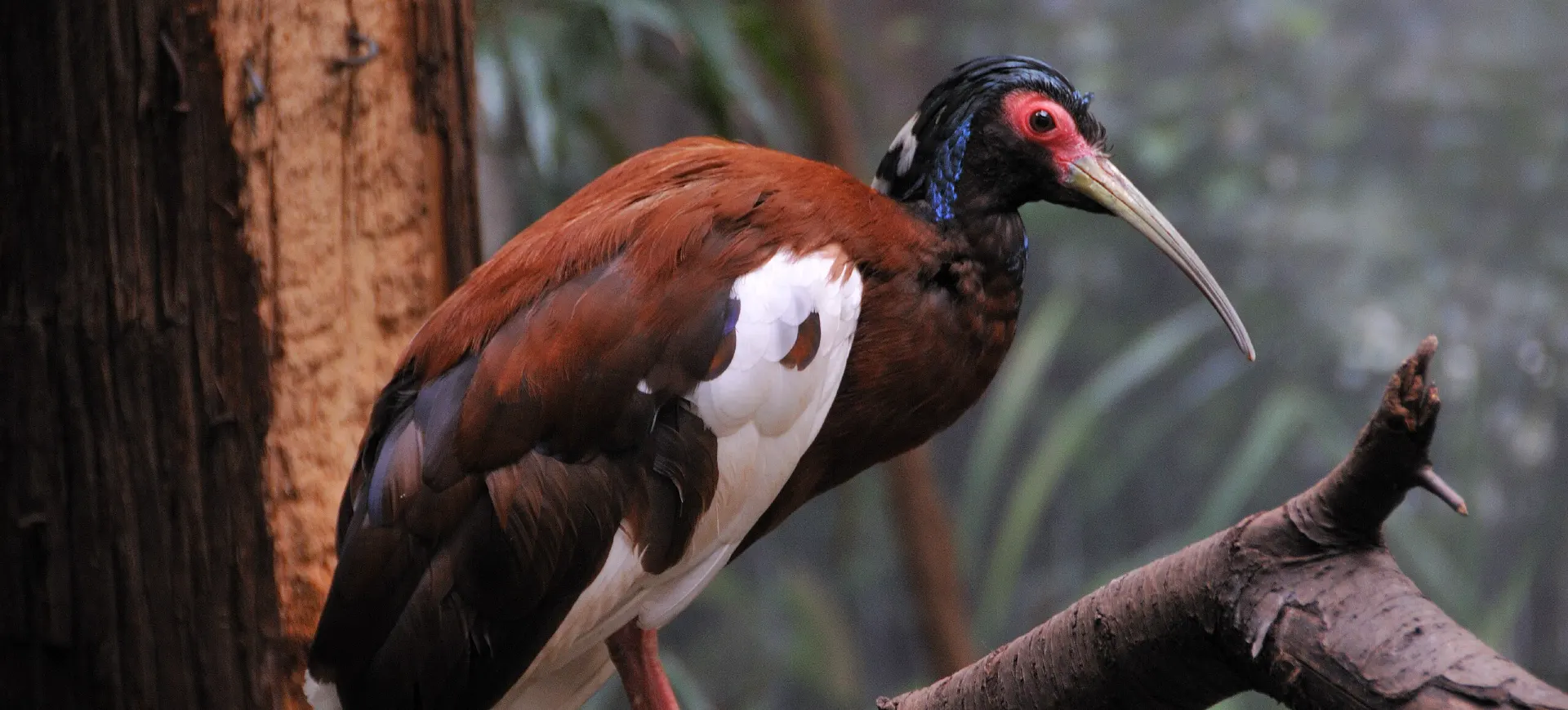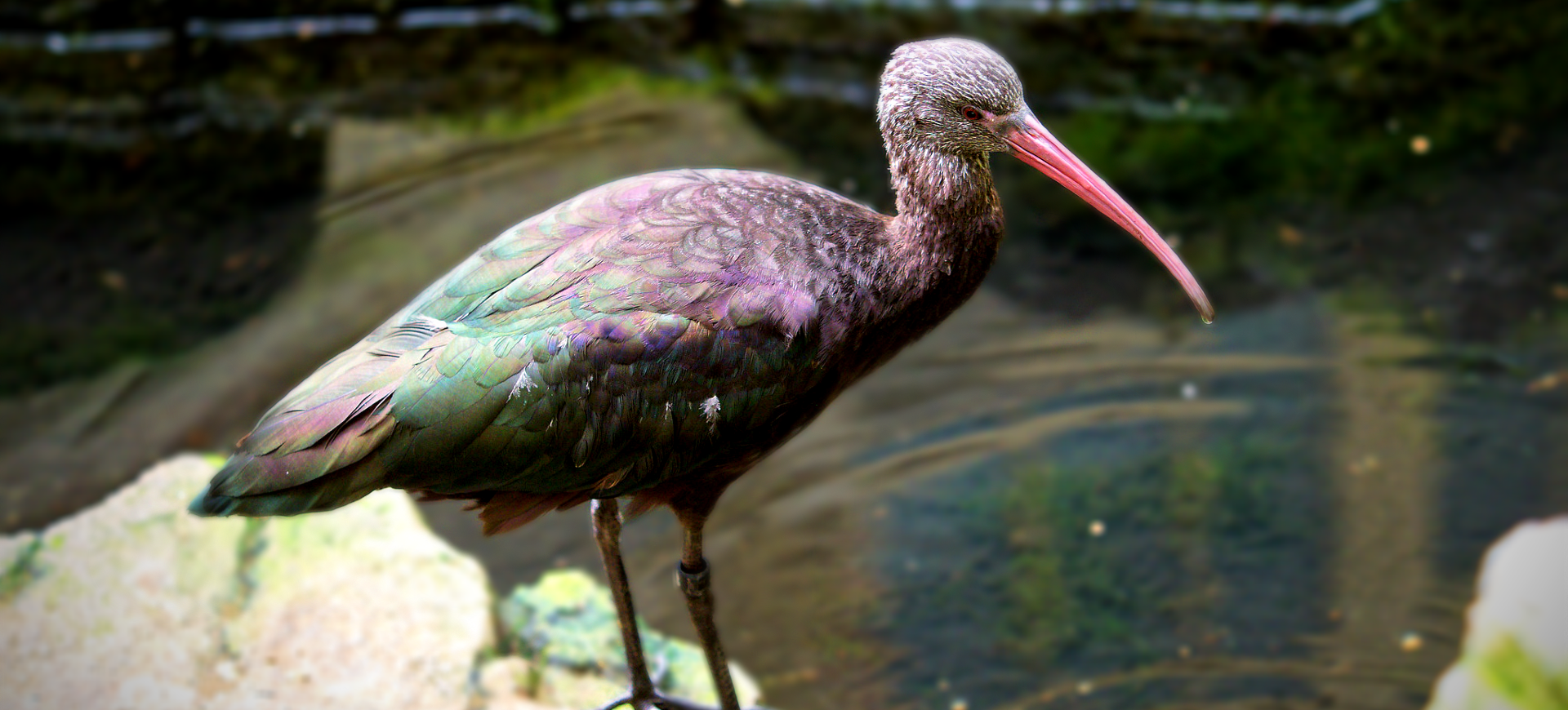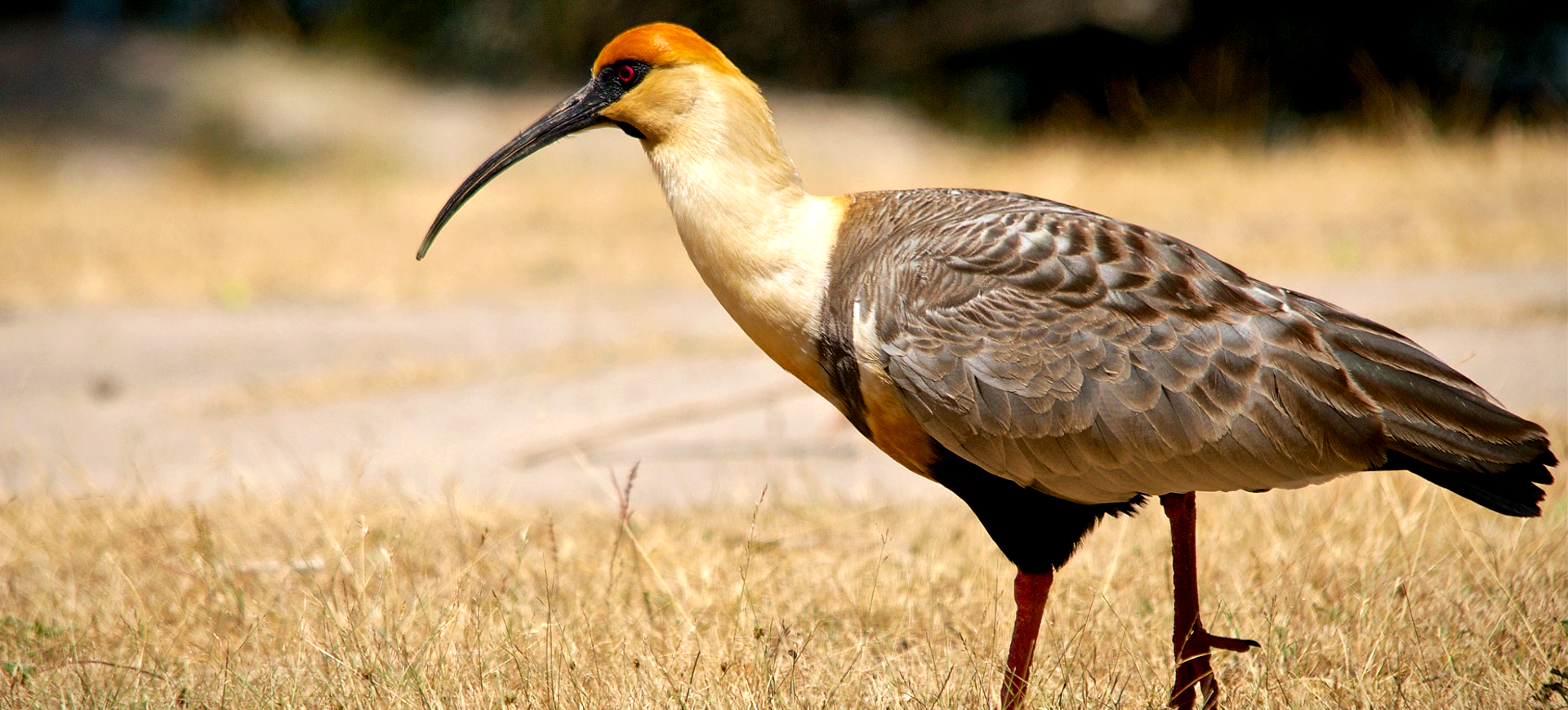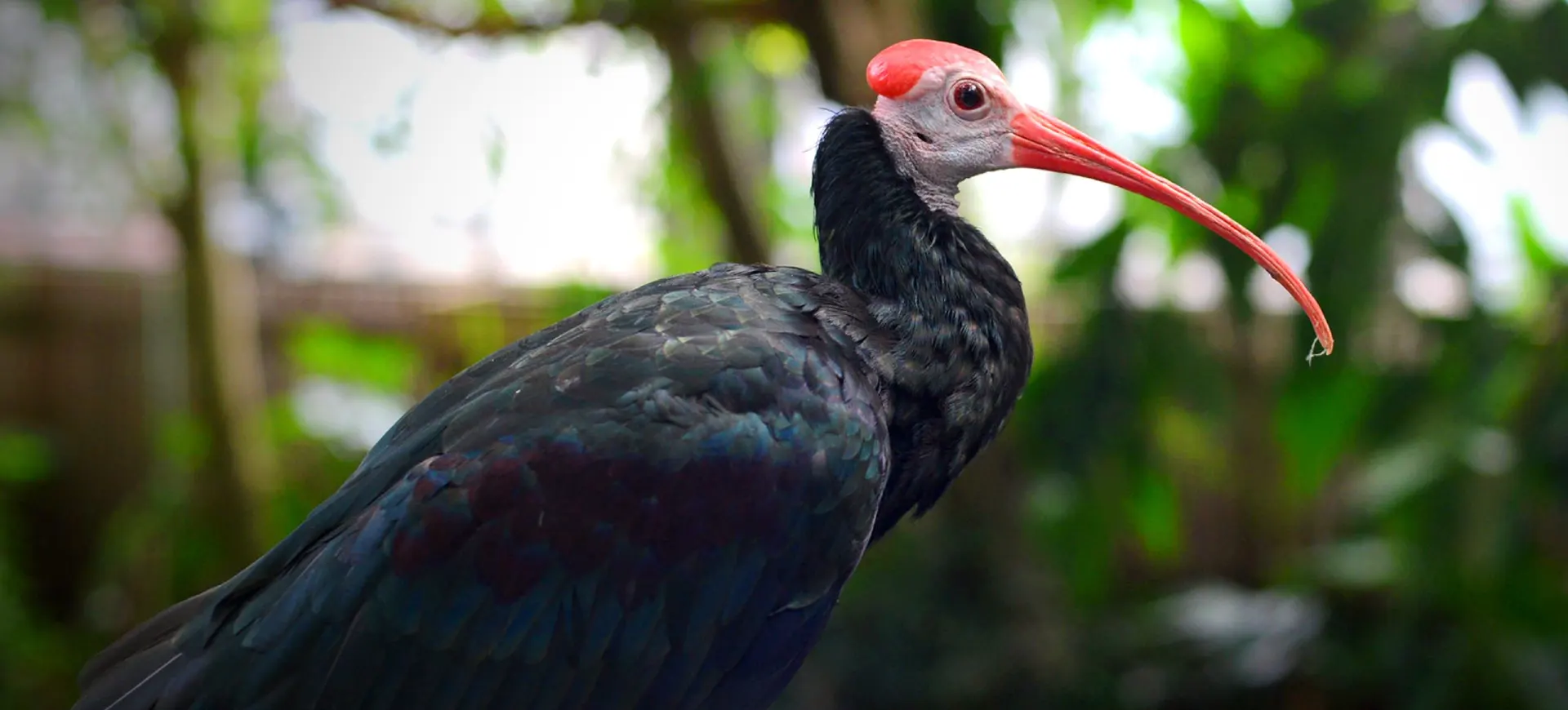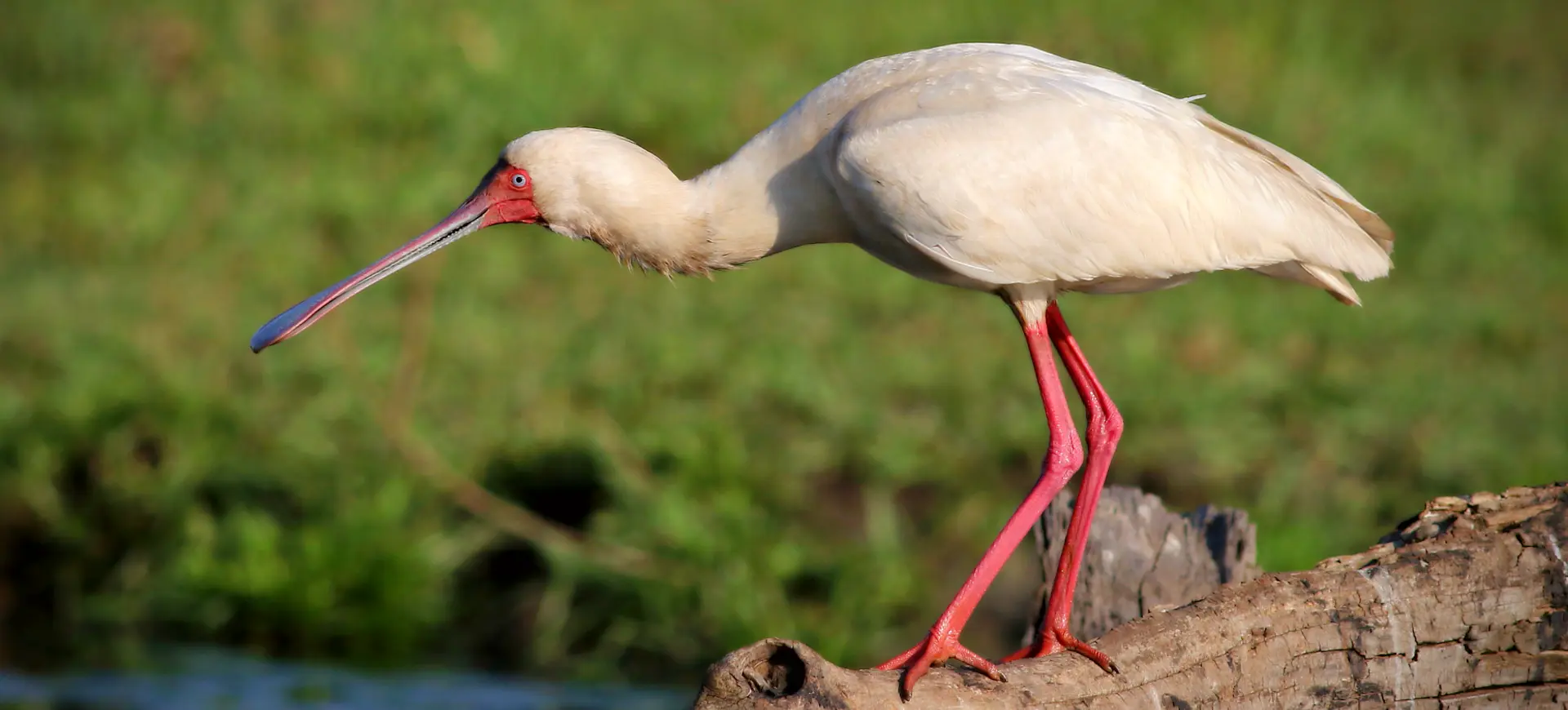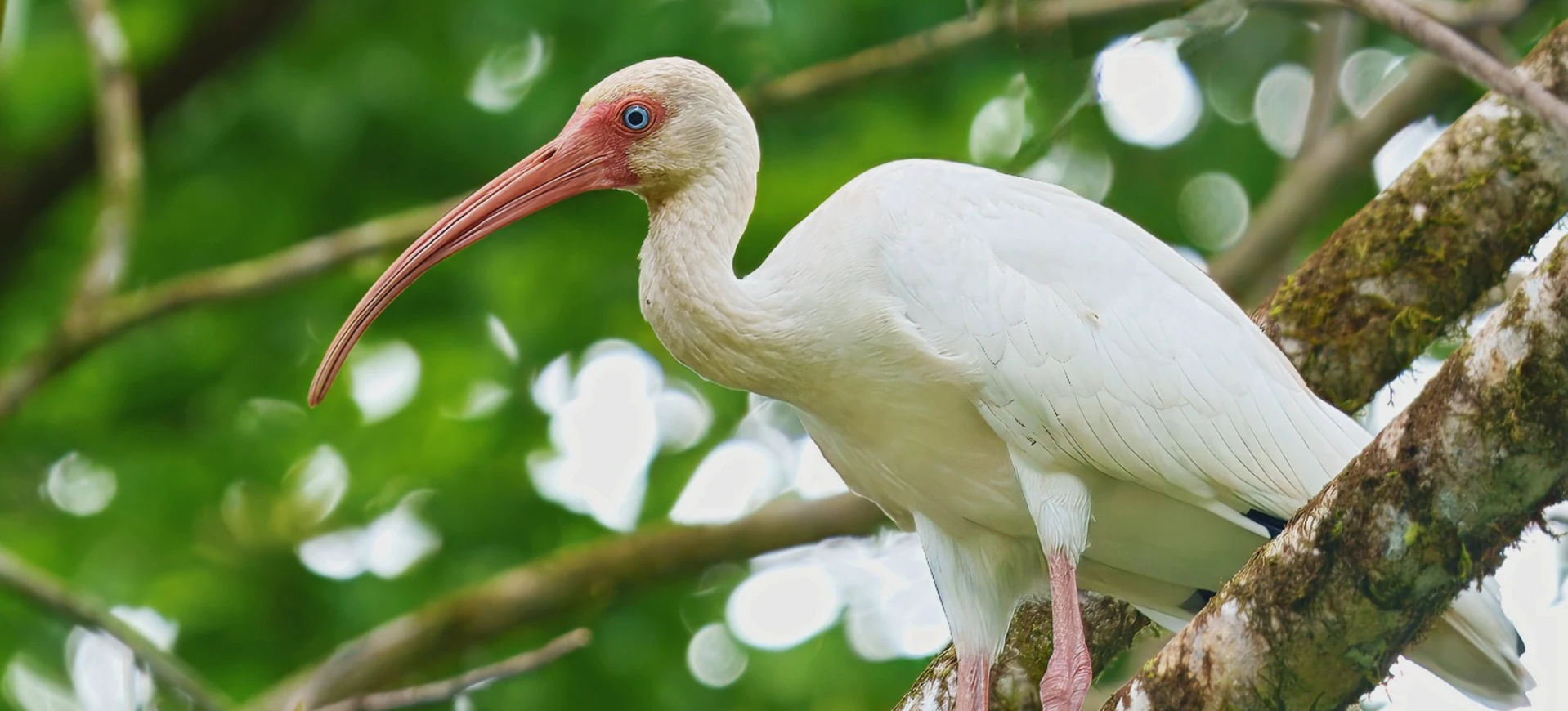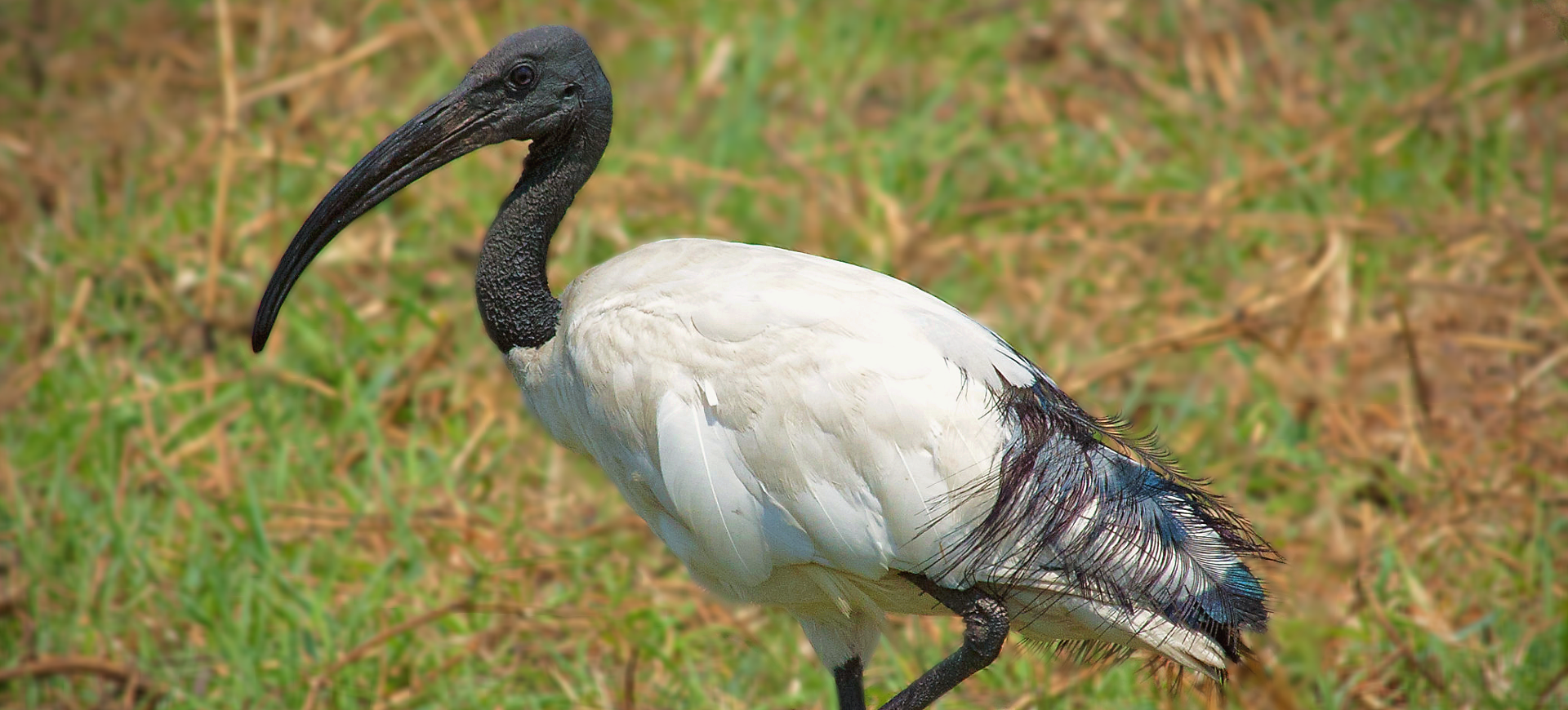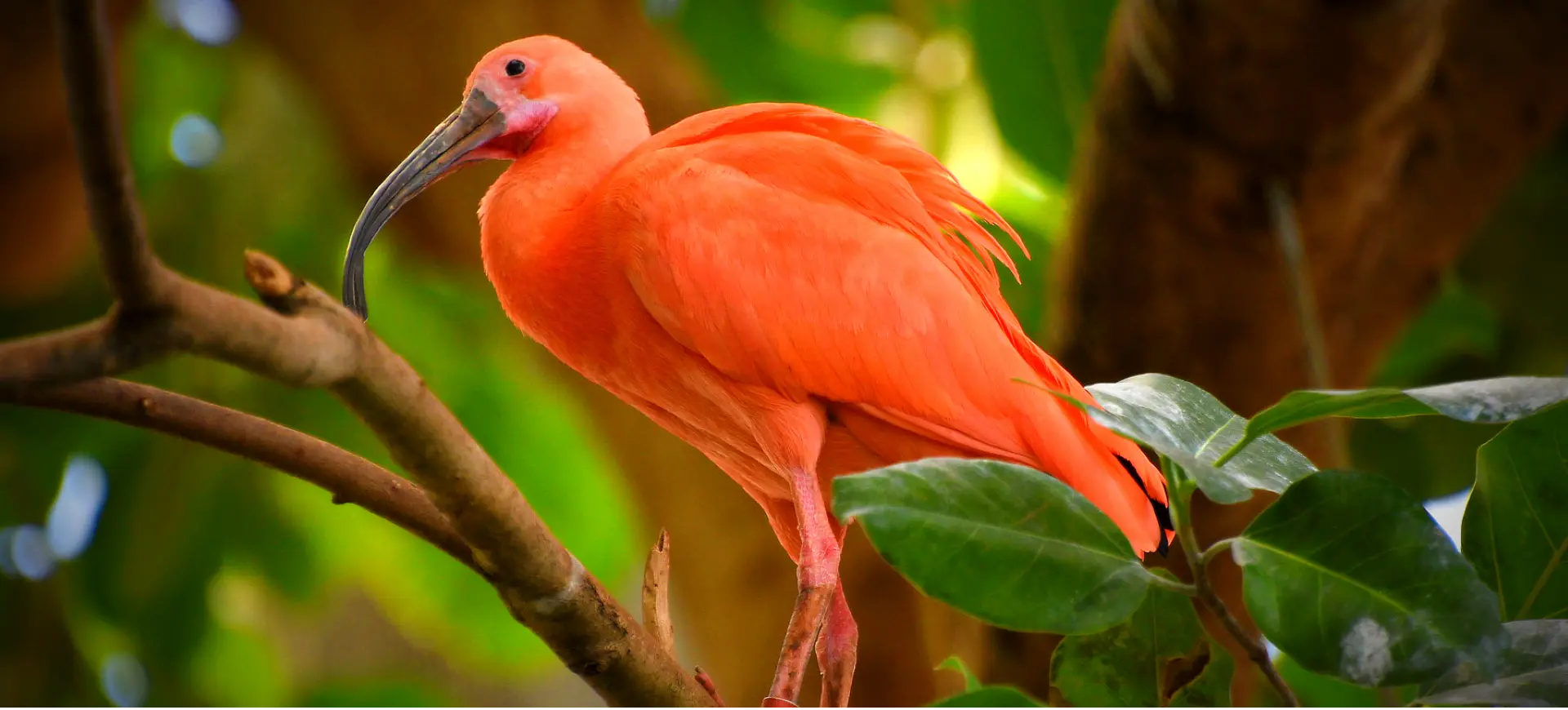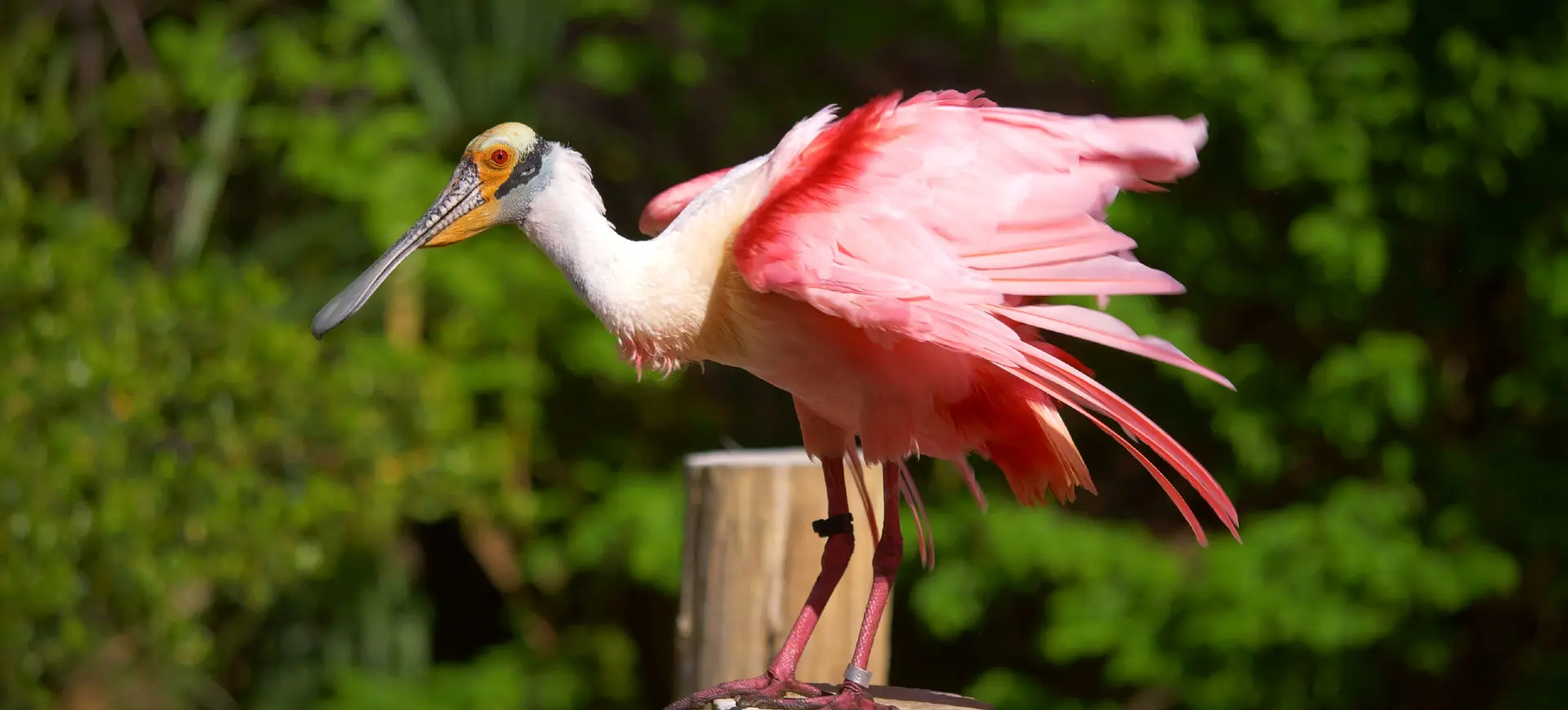Overview
The Straw-necked Ibis, Threskiornis spinicollis, is a large and distinctive bird native to Australia and found in parts of New Guinea. This species is easily recognizable by its mostly black body, iridescent sheen, and unique straw-like feathers adorning its neck, which give it its common name. These birds are highly adaptable, inhabiting a wide range of wetlands, including floodplains, swamps, and marshes, as well as agricultural and urban areas where food is abundant. Their varied diet consists of insects, crustaceans, and other small aquatic and terrestrial prey, making them important controllers of pest populations.
Straw-necked Ibises are social birds, often seen in large flocks, especially during breeding season when they form colonies to nest in trees or reeds near water bodies. Farmers welcome their presence in agricultural areas due to their appetite for locusts and other crop pests. These birds can long-distance flights, migrating within Australia in response to the seasonal availability of food and water, showcasing their adaptability to changing environmental conditions.
Breeding success and population dynamics of the Straw-necked Ibis are closely linked to rainfall patterns, which influence the availability of their aquatic prey and nesting sites. Conservation efforts focus on protecting wetland habitats, which are crucial for their feeding and breeding activities. Despite habitat loss and degradation threats, the Straw-necked Ibis remains a widespread species, indicating healthy populations across much of its range.
Taxonomy
Kingdom
Phylum
Class
Order
Family
Genus
Species
Type
Physical Description:
The Straw-necked Ibis stands out for its striking appearance, characterized by a glossy black body with metallic green and purple sheens visible in sunlight. The most distinctive feature is the straw-like plumes on its neck, particularly prominent during the breeding season. Adults have long, down-curved bills adapted for foraging in mud and shallow water, and their legs are long and strong, facilitating wading in their aquatic habitats. Both sexes appear similar in plumage, but males are generally slightly larger than females.
Juveniles differ from adults by their duller coloration and the absence of straw-like neck feathers. The wings of the Straw-necked Ibis are broad and powerful, supporting their migratory habits and ability to travel long distances in search of food and breeding sites. Their eyes are set high on their heads, allowing for excellent vision while foraging. The combination of their unique physical attributes defines their appearance and enhances their adaptability to diverse environmental conditions.

Lifespan: Wild: ~8 Years || Captivity: ~15 Years

Weight: Male & Female: 2.6-3.5 lbs (1.2-1.6 kg)

Length: Male & Female: 29-30 inches (73-76 cm)

Height: Male & Female: 24-28 inches (60-70 cm)

Wingspan: Male & Female: 49-53 inches (125-135 cm)

Top Speed: 24 mph (38.6 km/h)
Characteristic:
Native Habitat:
Straw-necked Ibises are native to Australia and inhabit a wide range of wetland environments, including lakes, rivers, marshes, and swamps. Their habitat preference extends to irrigated agricultural lands and sometimes urban areas, reflecting their adaptability to modified landscapes. The availability of water and food sources plays a significant role in determining their habitat use, with the species capable of exploiting both natural and artificial environments.
Their ability to thrive in diverse habitats highlights the ecological versatility of the Straw-necked Ibis. Conservation of their wetland habitats is crucial, as these areas provide essential resources for feeding, breeding, and social interactions. Despite their adaptability, preserving natural wetlands remains key to the species’ long-term survival.
Biogeographical Realms:
Countries:
Diet:
Diet & Feeding Habits:
Straw-necked Ibises are omnivorous, with a diet that includes various aquatic and terrestrial invertebrates, such as insects, worms, and crustaceans. They are particularly fond of locusts and grasshoppers, making them beneficial to agricultural areas. Their long, curved beaks are perfectly adapted for probing into soft mud or soil to extract prey, demonstrating a specialized feeding behavior contributing to their role as pest controllers.
These birds feed in wet and dry habitats, often seen foraging in fields, lawns, and along water edges. Feeding in large flocks allows them to cover more ground and effectively locate food sources, showcasing their social nature even during foraging activities. Seasonal variations in food availability can influence their diet composition and foraging locations, with the birds demonstrating flexibility in their feeding habits to adapt to different environmental conditions.
Mating Behavior:
Mating Description:
Straw-necked Ibises are colonial breeders, nesting in large groups in trees or reeds near water. Their breeding season is influenced by rainfall and water availability, typically in spring and summer. During this time, males display to attract females, using visual and auditory signals to establish pair bonds and secure nesting sites within the colony.
Nests are constructed from reeds, grasses, and twigs, with both parents involved in building and defending the nest. The female lays 2 to 4 eggs, which both parents incubate for about three weeks. The strong social structure within breeding colonies facilitates the protection of nests from predators and enhances the survival rates of offspring. The breeding success of Straw-necked Ibises is closely linked to environmental conditions, particularly food availability for the growing chicks.
Reproduction Season:
Birth Type:
Pregnancy Duration:
Female Name:
Male Name:
Baby Name:
Social Structure Description:
Straw-necked Ibises exhibit highly social behavior, forming large flocks outside the breeding season and nesting in colonies during the reproductive period. This social structure facilitates foraging efficiency and protects predators. Within breeding colonies, a hierarchy influences nest site selection, with more dominant pairs occupying preferred locations.
The strong social bonds formed within flocks and breeding pairs are essential for the species’ survival, enhancing cooperation in feeding, nesting, and defense. The adaptability of the Straw-necked Ibis to various social settings, from large flocks to isolated family units, underscores their complex social dynamics and ecological flexibility.
Groups:
Conservation Status:
Population Trend:
The Straw-necked Ibis is currently classified as Least Concern by the IUCN, with a stable population trend. This status reflects the species’ wide distribution and ability to adapt to various habitats, including those altered by human activity. Ongoing conservation efforts focus on preserving wetland habitats and managing water resources, which are critical for the feeding and breeding activities of the Straw-necked Ibis.
Monitoring populations and habitats helps identify any emerging threats or changes in population dynamics. The species benefits from a relatively high tolerance to habitat modification, provided that key resources such as food and nesting sites remain available. Conservation initiatives aim to ensure the continued health of wetland ecosystems, supporting the Straw-necked Ibis and many other species that depend on these habitats.
Population Threats:
Habitat loss and degradation pose the most significant threats to the Straw-necked Ibis, primarily due to agricultural expansion, urban development, and water diversion. Wetland degradation, resulting from pollution and invasive species, also impacts their feeding and breeding sites. With its effects on rainfall patterns and water availability, climate change presents an additional challenge, potentially affecting the species’ migratory patterns and habitat use.
Conservation efforts are directed toward mitigating these threats through habitat protection, restoration, and sustainable land and water management practices. Public awareness and community involvement are also crucial in promoting the conservation of wetlands and the species that inhabit them.
Conservation Efforts:
Conservation initiatives for the Straw-necked Ibis include habitat protection and restoration projects to preserve and enhance wetland ecosystems. These efforts are supported by environmental legislation and policies that promote sustainable water management and land use practices. Research and monitoring programs are key in understanding the species’ ecology, informing conservation strategies, and addressing potential threats.
Community engagement and education are essential components of conservation, raising awareness of the importance of wetlands and the need for their protection. International cooperation is also vital, as migratory species like the Straw-necked Ibis depend on a network of habitats across their range. Through these collective actions, conservation efforts aim to ensure the long-term survival of the Straw-necked Ibis and the rich biodiversity of wetland ecosystems.
Additional Resources:
Fun Facts
- The straw-like feathers on the neck of the Straw-necked Ibis are not always visible and can be fluffed out during displays or when the bird is agitated.
- Despite their preference for wetlands, Straw-necked Ibises are often seen foraging in dry fields and pastures, showcasing their dietary flexibility.
- They are crucial in pest control, consuming large quantities of locusts and agricultural pests.
- Straw-necked Ibises have been known to travel hundreds of kilometers in response to changing environmental conditions, demonstrating remarkable endurance.
- The iridescent sheen of their feathers, visible in sunlight, results from the microscopic structure of the feather barbules, which refract light.
- Their long, curved beaks are useful for foraging and nest building, where they intricately weave together twigs and reeds.
- Straw-necked Ibises can drink while flying, skimming the water’s surface with their beaks.
- They are among the few bird species that can effectively exploit natural and human-altered landscapes.
- The communal roosting and nesting behavior of Straw-necked Ibises offers protection and increases the success rate of raising young.
- Conservation of the Straw-necked Ibis contributes to the overall health of wetland ecosystems, benefiting a wide range of species and maintaining biodiversity.











